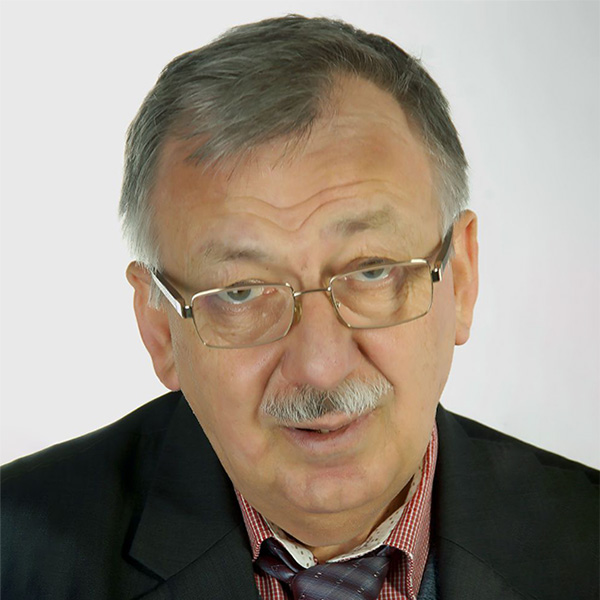
Prof. Andriy M. Gusak graduated from the Moscow State University with honours, specialized in theoretical physics. Then he received the PhD degree at the Institute of Metallurgy, Academy of Sciences of USSR (Moscow). Currently, Prof. Gusak serves at the Department of Physics in Cherkasy National University, Ukraine.
His research works focus on kinetics of solid-state reactions in particular soldering and SHS kinetics. He is also interested in theories and models of interdiffusion and reactive diffusion in binary and multicomponent multiphase alloys. Prof. Gusak received research grants from the Ministry of Education and Science of Ukraine for seven times, and was granted for State Fund of Fundamental Research of Ukraine for four times. Prof. Gusak is a regular member of the advisory board of International Conference on Diffusion in Materials (DIMAT). Besides, he organized five international conferences on diffusion and phase transformation (DIFTRANS, DSSR) in1998, 2001, 2004, 2007, and 2012 in Cherkasy region.
Failure of the microelectronic device may be treated in the frame of non-equilibrium thermodynamics. Three main ideas are discussed:
Failure may be treated as a result of accumulation of structural entropy beyond some threshold value. Accumulation of structural entropy is calculated as a "non-heating" part of entropy production in the processes of electromigration, thermomigration and stress migration. Such approach leads to the Black's equation for MTTF with exponent n=2 for electromigration-induced failure, and to analogous predictions for thermomigration-induced failure, as well as for stress migration-induced failure.
Failure may be treated as a kind of the first-order phase transformation in an open system, and includes nucleation, growth or migration and (sometimes) ripening. Moreover, the usually used cumulative Weibull distribution for time to failure (TTF) looks very similar to Kolmogorov-Avrami equation for crystallization kinetics describing nucleation and growth of crystalline phase[1]. Several examples of failure mechanisms are analyzed within this framework.
Failure may be treated as a result of incompatibility of steady-states for different processes in an open system. For example, steady-state current under fixed voltage between the cathode and anode ends of interconnect leads to electromigration of atoms and vacancies which, in realistic materials, lead to non-steady-state voiding and hillock formation, and to eventual failure. Fully compatible steady-states for all processes would mean "immortality" at least for interconnect.
References
[1] TU, King-Ning. Electronic thin-film reliability. Cambridge University Press, 2010.